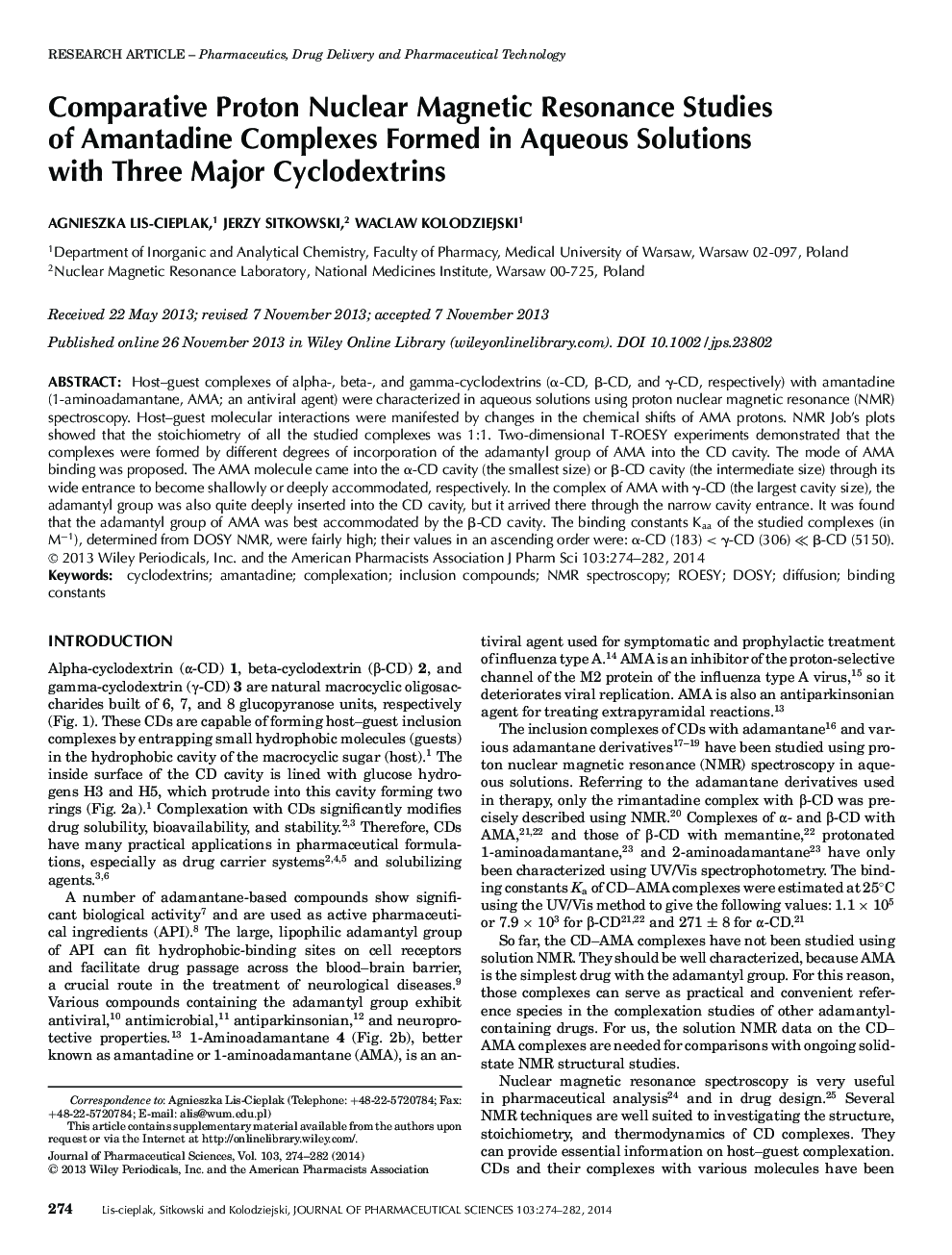| Article ID | Journal | Published Year | Pages | File Type |
|---|---|---|---|---|
| 10162659 | Journal of Pharmaceutical Sciences | 2014 | 9 Pages |
Abstract
Host-guest complexes of alpha-, beta-, and gamma-cyclodextrins (α-CD, β-CD, and γ-CD, respectively) with amantadine (1-aminoadamantane, AMA; an antiviral agent) were characterized in aqueous solutions using proton nuclear magnetic resonance (NMR) spectroscopy. Host-guest molecular interactions were manifested by changes in the chemical shifts of AMA protons. NMR Job's plots showed that the stoichiometry of all the studied complexes was 1:1. Two-dimensional T-ROESY experiments demonstrated that the complexes were formed by different degrees of incorporation of the adamantyl group of AMA into the CD cavity. The mode of AMA binding was proposed. The AMA molecule came into the α-CD cavity (the smallest size) or β-CD cavity (the intermediate size) through its wide entrance to become shallowly or deeply accommodated, respectively. In the complex of AMA with γ-CD (the largest cavity size), the adamantyl group was also quite deeply inserted into the CD cavity, but it arrived there through the narrow cavity entrance. It was found that the adamantyl group of AMA was best accommodated by the β-CD cavity. The binding constants Kaa of the studied complexes (in Mâ1), determined from DOSY NMR, were fairly high; their values in an ascending order were: α-CD (183) < γ-CD (306) ⪠β-CD (5150). © 2013 Wiley Periodicals, Inc. and the American Pharmacists Association J Pharm Sci 103:274-282, 2014
Keywords
Related Topics
Health Sciences
Pharmacology, Toxicology and Pharmaceutical Science
Drug Discovery
Authors
Agnieszka Lis-Cieplak, Jerzy Sitkowski, Waclaw Kolodziejski,
